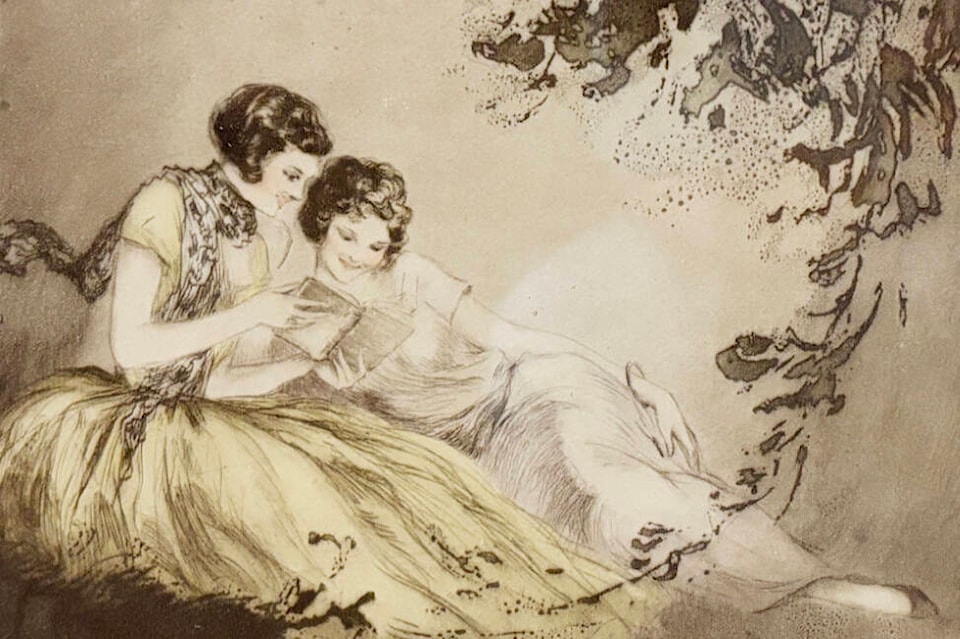Emma Wilton | Contributed
This month, the Sooke Region Museum debuts the exhibit Visibility/Invisibility: Gendered (Re)Orderings, curated by doctoral candidate Nabila Kazmi from the University of Victoria.
The museum hosted Kazmi’s exhibit, Culture of Head Coverings, last summer, and we look forward to hosting another.
Visibility/Invisibility utilizes artifacts, art, photos, and narratives to illustrate gendered experiences and existence. It delves into how gender is manifested or concealed through various objects and narratives. The exhibit prompts reflection on how these mediums render individuals conspicuous or concealed. Featuring diverse global and local stories, including those from Sooke and across Canada
The exhibit features one photo and three objects from the museum’s collection, revealing how gender becomes visible or invisible.
We had to think past the traditional uses and meanings of the objects featured and reconsider them with contemporary perspectives. Photograph SRHS#924 shows women competing in the ladies’ nail-driving competition at All Sooke Day in 1961.
It highlights the difference between the “feminine” clothing and the “masculine” event of nail driving. This can make a woman’s identity more visible due to the stark differences between the feminine and masculine.
The objects include a washboard, a mourning shawl and a lithograph. The washboard and shawl can hide or obscure women’s identities. A washboard is used for doing laundry, and the household’s woman mainly did that.
While the mourning shawl is a performative object that women wear to conform to certain social expectations, these two items can reduce a woman’s identity to the action or event with which the object is associated.
The lithograph The Romance (1836) is distinct from the rest. Its ambiguity prompts inquiries into its intended message. Exploring alternative narratives may challenge our initial interpretations. By doing so, individuals can formulate personalized understandings of its significance, relating it to their identities.
The objects featured in the exhibit mainly focus on women’s identities or feminine experiences. As a community museum, it is our responsibility to ensure we represent everyone in the Sooke Region.
Some people may not see themselves or their stories represented in the photos or objects described above or in the museum. Considering this exhibit and how gender becomes visible/invisible, I encourage people to share stories through pictures or objects highlighting currently underrepresented gender identities in the Sooke Region and send them to the museum.
Our goal is to build a diverse and inclusive museum, which includes expanding our collection to reflect the communities we serve. We hope that by adding these stories, everyone can feel included in our collective identities and that the museum is a place for them.
If you want to share a story or have photos and objects to donate, please get in touch with the museum at musasst@sookeregionmuseum.com.
•••
Emma Wilton is the Sooke Region Museum collections and exhibits manager. Email musasst@sookeregionmuseum.com.
